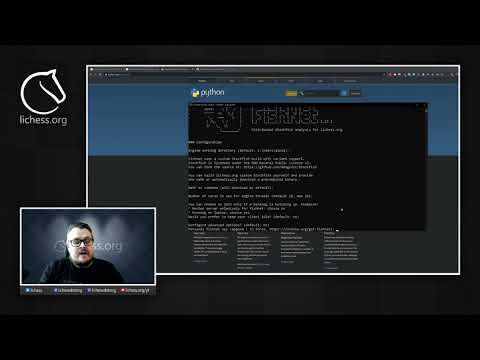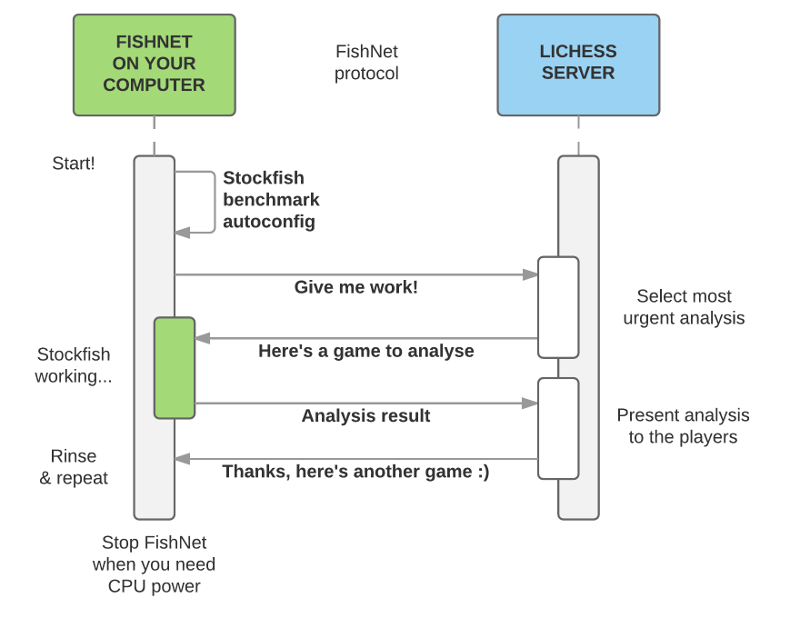Distributed Fairy-Stockfish analysis for lishogi.org
Project description

Based on lichess-org/fishnet@824bfe4
Installation
Install the lishoginet client.
Via pip
To install or upgrade to the latest version do:
pip install --upgrade --user lishoginet
Example usage:
python -m lishoginet --auto-update
Other useful commands:
python -m lishoginet configure # Rerun the configuration dialog python -m lishoignet systemd # Generate a systemd service file python -m lishoginet --help # List all commands and options
Via Docker
There is a Docker container courtesy of @mklemenz. For example you can simply do:
docker build -t lishoginet:latest . docker run -it lishoginet:latest
Lichess’ Video tutorial

FAQ
Which engine does lishoginet use?
lishoginet is using a fork of Stockfish called Fairy Stockfish which supports both shogi and shogi variants by @ianfab.
You can build Fairy-Stockfish yourself (for example with ./build-stockfish.sh) and provide the path using python -m lishoginet --stockfish-command. Otherwise a precompiled binary will be downloaded for you.
What are the requirements?
Precompiled Fairy-Stockfish binaries available for Linux, Windows and OS X on Intel and AMD CPUs
Python 3.3+ or 2.7
Will max out the number of configured CPU cores
Uses a default of 256 MiB RAM per engine process, spawns one process for each group of ~3 cores
A small amount of disk space
Low-bandwidth network communication with Lishogi servers (only outgoing HTTP requests, so probably no firewall configuration required)
Is my CPU fast enough?
Almost all processors will be able to meet the requirement of 4 meganodes in 6 seconds. Clients on the faster end will automatically be assigned analysis jobs that have humans waiting for the result (the user queue, as opposed to the system queue for slower clients).
What happens if I stop my client?
Feel free to turn your client on and off at any time. By default, the client will try to finish any jobs it has already started. On immediate shutdown, the client tries to inform Lishogi that jobs should be reassigned. If even that fails, Lishogi will reassign the jobs after a timeout.
Will lishoginet use my GPU?
No, Fairy-Stockfish is a classical alpha-beta engine.
Is lishoginet secure?
To the best of our knowledge. All network communication uses modern TLS. However you implicitly trust the authors, PyPI infrastructure when running with --auto-update, the CI infrastructure when using precompiled Fairy-Stockfish binaries, and Lishogi to not exploit potential vulnerabilities in Fairy-Stockfish’s USI implementation. You can mitigate all of these by running lishoginet as an unprivileged user.
Is there a leaderboard of contributors?
No, sorry, not publically. It would incentivize gaming the metrics.
Is there a Docker image?
Yes, see the installation instructions above.
Can I autoscale lishoginet in the cloud?
There is currently no ready-made solution, but an API for monitoring the job queue status is provided.
Protocol

See protocol.md for details.
License
lishoginet is licensed under the GPLv3+. See LICENSE.txt for the full license text.
Project details
Release history Release notifications | RSS feed
Download files
Download the file for your platform. If you're not sure which to choose, learn more about installing packages.
Source Distribution
Built Distribution
Hashes for lishoginet-2.0.0-py2.py3-none-any.whl
| Algorithm | Hash digest | |
|---|---|---|
| SHA256 | 08e38834be952a2d2da931014b425963bc042acedca0a99e4aa829f32739618b |
|
| MD5 | 6f728328fa83f6048bbe11efcaaae14d |
|
| BLAKE2b-256 | 0671feef104e1515d62dfbdd073cfb2fcee604f8c74e24c25afd3c63d9cdb69b |










